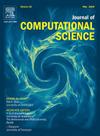BPMT:安全有效的电子病历管理系统混合模式
IF 3.1
3区 计算机科学
Q2 COMPUTER SCIENCE, INTERDISCIPLINARY APPLICATIONS
引用次数: 0
摘要
设计一个高效的分布式区块链系统来存储和访问不断增加的电子病历(EMR)仍然具有挑战性。虽然已经设计了许多技术来熟练利用 EMR,但它们仍然在访问时间、存储时间和吞吐量方面存在问题。在这项工作中,我们提出了一种基于 Merkle 和 B+ 树的混合模型,以提高区块链系统的性能。B+ 树以其实用的布局和平衡的结构提高了系统的性能。同时,梅克尔树确保了信息的完整性和安全性。所提出的(B+ 默克尔树)BPMT 模型缩短了记录的存储时间,提高了系统的吞吐量,并大大减少了内存的使用。对这些改进进行了全面的复杂性分析,并在多个数据集上进行了测试,验证了该模型的有效性和可扩展性。这些成果验证了该模型的性能改进,并为基于区块链的医疗记录管理的进一步发展奠定了基础。本文章由计算机程序翻译,如有差异,请以英文原文为准。
BPMT: A hybrid model for secure and effective electronic medical record management system
Designing an efficient distributed blockchain system to store and access rising electronic medical records (EMR) is still challenging. Although many techniques have been designed to utilize EMRs proficiently, they still suffer from accessing time, storage time, and throughput. In this work, we have proposed a Merkle and B+ tree-based hybrid model to improve the performance of the blockchain system. B+ tree has improved the system's performance because of its practical layout and balanced structure. At the same time, Merkle Tree has ensured the integrity and security of the information. The proposed (B+ Merkle tree) BPMT model has reduced the storage time of records, improved the system's throughput, and significantly reduced memory use. These enhancements are supported by a thorough complexity analysis and testing on several datasets, which validate the efficacy and scalability of the model. The outcomes validate the performance improvements of the model and lay the groundwork for further developments in blockchain-based EMR management.
求助全文
通过发布文献求助,成功后即可免费获取论文全文。
去求助
来源期刊

Journal of Computational Science
COMPUTER SCIENCE, INTERDISCIPLINARY APPLICATIONS-COMPUTER SCIENCE, THEORY & METHODS
CiteScore
5.50
自引率
3.00%
发文量
227
审稿时长
41 days
期刊介绍:
Computational Science is a rapidly growing multi- and interdisciplinary field that uses advanced computing and data analysis to understand and solve complex problems. It has reached a level of predictive capability that now firmly complements the traditional pillars of experimentation and theory.
The recent advances in experimental techniques such as detectors, on-line sensor networks and high-resolution imaging techniques, have opened up new windows into physical and biological processes at many levels of detail. The resulting data explosion allows for detailed data driven modeling and simulation.
This new discipline in science combines computational thinking, modern computational methods, devices and collateral technologies to address problems far beyond the scope of traditional numerical methods.
Computational science typically unifies three distinct elements:
• Modeling, Algorithms and Simulations (e.g. numerical and non-numerical, discrete and continuous);
• Software developed to solve science (e.g., biological, physical, and social), engineering, medicine, and humanities problems;
• Computer and information science that develops and optimizes the advanced system hardware, software, networking, and data management components (e.g. problem solving environments).
 求助内容:
求助内容: 应助结果提醒方式:
应助结果提醒方式:


